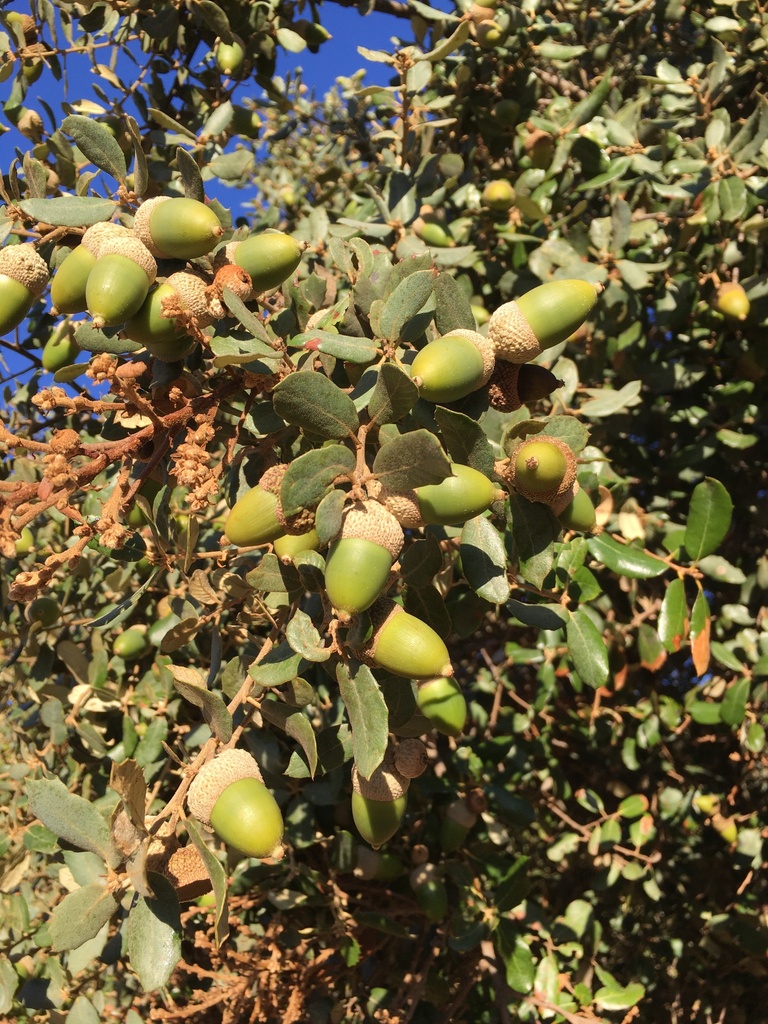Nature Plants: Masting affects a tree’s enemies and its friends
Qiu, T., …, and J. S. Clark. Masting is uncommon in trees that depend on mutualist dispersers in the context of global climate and fertility gradients. Nature Plants (2023). https://doi.org/10.1038/s41477-023-01446-5
Erratic seed crops may help trees confound their seed predators, but what does it do to the seed dispersers that trees need to insure successful germination?
Erratic fruit production, or “masting”, may be a strategy trees use to defend their seeds from the many mammals, birds, and insects that consume them. High carbohydrate, fat, and protein content makes seeds, fruits, and nuts among the highest quality plant foods in nature. The provisions needed to give seedlings a head start after germination place them at risk from seed predators. The lean years between large seed crops could keep seed predators at low levels—too low to wipe out a big seed crop that comes along at long intervals. The relatively rare big crop year can be the time to escape.

But there is a problem with this explanation for masting. The same tree species that attract seed predators may also depend on mammals and birds to disperse their seeds. These friends are so valuable that many tree species pack their fruits and nuts with extra resources and advertise them with colorful displays, all to attract their important mutualist dispersers.
Here is the conundrum. Wouldn’t the unreliable seed production that thwarts a tree’s enemies have the same negative impacts on their disperser friends? If masting effectively guards against enemies (it does), then perhaps the species that rely most heavily on disperser species must forego this defensive option.
An analysis of seed production in hundreds of tree species across five continents shows this mixed benefit of masting. Using the Masting Inference and Forecasting (MASTIF) network, our lab showed the relationship between masting behavior and mutualist dispersers. The tree species that depend most on vertebrate dispersers are the ones that avoid masting. In the temperate forests of the North America and Eurasia, oaks and firs are prolific mast species. Pines and spruces also mast, but to a lesser degree. Hickories and walnuts still less. Chestnut and the fleshy fruits of black gum, holly, hack- and sugarberry, persimmon, juniper, yew, and pawpaw, hardly at all—they are “reliable” resources.
The masting firs, pines, and spruce fall prey to birds and many rodents in the canopy and when they reach the forest floor. In the tree, conifers can defend their seeds in woody, resin coated cones, many of which are armed with spines—they are a mess to handle. Once on the forest floor the exposed seeds are rapidly depleted by rodents. With few mutualist dispersers, they are prime candidates for masting.
At the opposite extreme, rich, colorful fruits avoid wild fluctuations—they depend on their animal dispersers. There is still plenty of year-to-year variation, because a large expensive fruit is sensitive to moisture stress. A good two-week drought in mid-summer will see many trees abandoning much of their fruit crop—early abortion. This includes not only fleshy fruits like persimmon, hackberry (including nettle tree in Europe), and black gum. Acorns and hickory nuts also have high moisture content; they too will abort many partially developed seeds to trim the resource demand. Still, a string of years with suitable climate conditions can see reliable crops in many of these species, one after another.
The oaks are exceptional. Nutrient- and moisture-laden acorns are a target for many consumers. Still their size and moisture requirements place them at the mercy of dispersers that could “plant” them quickly. Escaping predators on the forest floor is not enough—unless rains persist through early germination, they risk desiccation. The new five-continent study in Nature Plants does not explain how trees mast. It does show that an effective strategy for enemies can be modified where it may inflict damage on mutualist friends.
Qiu, T., …, and J. S. Clark. Masting is uncommon in trees that depend on mutualist dispersers in the context of global climate and fertility gradients. Nature Plants (2023). https://doi.org/10.1038/s41477-023-01446-5
Phys.org; https://phys.org/news/2023-06-seed-survival-story-trees-friends.html
Earth.com https://www.earth.com/news/when-it-comes-to-seed-survival-trees-have-friends-and-enemies/
Eurekalert! https://www.eurekalert.org/news-releases/994120
Science daily: https://www.sciencedaily.com/releases/2023/06/230629125706
scienceMagazine: https://scienmag.com/a-seed-survival-story-how-trees-keep-friends-close-and-enemies-guessing/
Mirage: https://www.miragenews.com/seed-survival-how-trees-keep-friends-close-and-1037692/
Skynews: https://skynews.icu/science/397449-how-trees-keep-friends-close-and-enemies-guessing/
Life technology: https://www.lifetechnology.com/blogs/life-technology-science-news/a-seed-survival-story-how-trees-keep-friends-close-and-enemies-guessing
Outdoor news: https://www.outdoornews.com/2023/06/30/seed-survival-story-how-trees-keep-friends-close-enemies-guessing/
